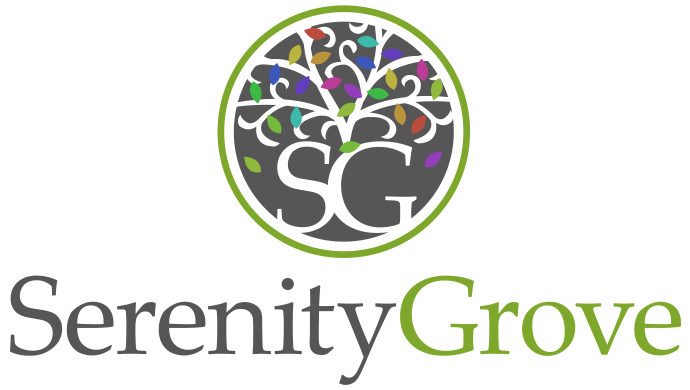Panic disorder is a serious mental health condition that can significantly impact an individual’s quality of life. Characterized by sudden and repeated episodes of intense fear, known as panic attacks, this disorder can interfere with daily activities, work, and personal relationships. But is panic disorder considered a disability? This article explores the nature of panic disorder, its symptoms, prevalence, and whether it qualifies as a disability, with a special focus on how Serenity Grove in Athens, Georgia, can offer support. Contact our mental health treatment center today to get help.
What Is Panic Disorder?
Panic disorder is a type of anxiety disorder characterized by recurrent, unexpected panic attacks. A panic attack is a sudden episode of intense fear that triggers severe physical reactions when there is no real danger or apparent cause. These episodes can occur at any time, even during sleep, leading to significant distress. Individuals with panic disorder often live in constant fear of having another panic attack, which can lead to avoidance behaviors and further anxiety.
Panic attacks are not always linked to external stressors; they can happen spontaneously, making daily life unpredictable and challenging. The physical symptoms of a panic attack can be so intense that individuals often feel like they are experiencing a heart attack or losing control. These symptoms include rapid heart rate, sweating, trembling, shortness of breath, and a sense of impending doom.
Understanding the nature of panic disorder is crucial because it explains why this condition can be so debilitating. The chronic fear and avoidance behaviors associated with panic disorder can interfere with daily activities, work, and personal relationships. Recognizing the symptoms and seeking treatment is essential for managing the condition and improving quality of life.
Panic Attack Symptoms
The symptoms of a panic attack are both physical and psychological, typically peaking within minutes and causing intense distress. Common symptoms include:
- Rapid heart rate: A sudden increase in heartbeat.
- Sweating: Excessive perspiration, often profuse and unprovoked.
- Trembling or shaking: Uncontrollable physical shakiness.
- Shortness of breath: A feeling of being unable to catch your breath or feeling choked.
- Feelings of impending doom or danger: An overwhelming sense of dread or fear.
- Chest pain: Discomfort or pain in the chest, often mistaken for a heart attack.
- Nausea: Stomach upset or the urge to vomit.
- Dizziness or lightheadedness: Feeling faint or unsteady.
- Chills or hot flashes: Sudden changes in body temperature.
- Numbness or tingling sensations: Often felt in the hands and feet.
- Feeling of unreality or detachment: Derealization (feeling detached from the surroundings) or depersonalization (feeling detached from oneself).
These symptoms can be so severe that many people believe they are experiencing a heart attack or other life-threatening condition. This intense fear and discomfort can make panic disorder debilitating, as the unpredictable nature of attacks can lead individuals to avoid situations where they fear an attack might occur, significantly impacting their daily lives.
Panic Disorder Statistics
Panic disorder is a prevalent mental health condition affecting millions globally. In the United States, the National Institute of Mental Health (NIMH) reports that approximately 4.7% of adults will experience panic disorder at some point in their lives, translating to about 12.1 million people. Annually, about 2.7% of U.S. adults report symptoms of panic disorder.
Women are significantly more affected than men, with a prevalence rate of 3.8% compared to 1.6% in men. Panic disorder often begins in late adolescence or early adulthood but can also start in childhood or later in life.
The condition is often associated with severe impairment, with about 44.8% of affected individuals experiencing significant disruption in their daily lives, as measured by the Sheehan Disability Scale. Additionally, panic disorder frequently co-occurs with other mental health issues, such as depression and substance abuse, which can further complicate and intensify its impact on individuals. Recognizing these statistics underscores the importance of timely intervention and comprehensive treatment for those affected by panic disorder.
Is Panic Disorder a Disability?
Determining if panic disorder qualifies as a disability depends on its impact on daily functioning. The Americans with Disabilities Act (ADA) defines a disability as an impairment that substantially limits major life activities.
Panic Disorder and the ADA
Panic disorder can be considered a disability under the ADA if it significantly disrupts daily activities such as working or learning. Frequent and severe panic attacks that hinder employment or essential tasks may entitle individuals to reasonable workplace accommodations like flexible hours or remote work options.
Social Security Disability Benefits
Individuals with panic disorder may also qualify for Social Security Disability benefits if the condition is well-documented and severe enough to prevent substantial gainful activity. Medical records and treatment history are essential to establish the disorder’s impact.
Disability Definitions and Benefits
ADA: Recognizes panic disorder as a disability, requiring employers to provide reasonable accommodations for affected employees.
Social Security Disability Insurance (SSDI): Provides benefits to those unable to work due to panic disorder, given sufficient work history and evidence.
Supplemental Security Income (SSI): Offers financial aid to disabled individuals with limited income and resources, including those with panic disorder.
State-Level Protections
State programs may also offer protections and benefits for individuals with panic disorder. Check your state government’s website or contact health and human services for specific information. Recognizing these definitions and protections can offer vital support for those living with panic disorder.
Therapy Services Available in Athens, GA
Living with panic disorder can be challenging, but help is available. At Serenity Grove in Athens, Georgia, we offer comprehensive treatment programs designed to address the unique needs of individuals with panic disorder and other mental health conditions. Our services include:
- Individual therapy
- Group therapy
- Medication management
- Holistic therapies
- Support groups
Our experienced and compassionate team is dedicated to helping you regain control of your life. If you or a loved one is struggling with panic disorder, contact us today to learn more about our anxiety treatment program and how we can support your journey to recovery.
Find Help for Panic Disorder in Athens, GA
Panic disorder is a debilitating condition that can significantly impact an individual’s daily life. Recognizing it as a disability is essential for ensuring that those affected receive the necessary support and accommodations. Whether through workplace adjustments or eligibility for disability benefits, acknowledging the seriousness of panic disorder is a crucial step towards comprehensive care and support. At Serenity Grove, we are committed to providing the resources and treatment needed to help individuals manage their condition and improve their quality of life. Call our center or visit our admissions page today to get started.


